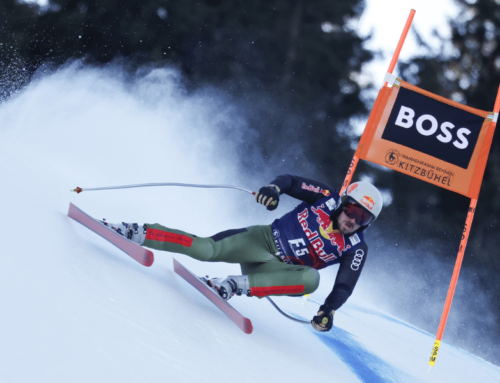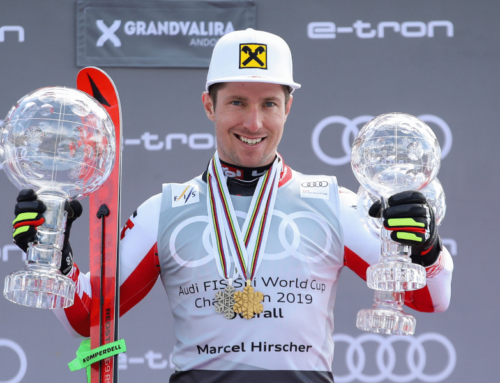Letter: Why the U.S. Ski Team is not the dream team
The day I joined the National Training Group was the day I began to question my love for ski racing. My entire life leading up to that moment was lived in pursuit of my single most prized dream: to make the U.S. Ski Team and go to the Olympics. Never could I have ever imagined that this very dream turned out to be my worst nightmare.
Why is it such a question whether NCAA ski racing is a viable World Cup pipeline or not? Of course it is! Look at all of the ladies and gentlemen from both the U.S. and abroad that have attended, skied for, and graduated from American Universities, that have gone on to lead careers on the World Cup Circuit.
So who exactly are we talking about? Let me take you on a fun journey of Collegiate and World Cup Skiers.
Roni Remme learned “self-management” and called NCAA skiing a “healthier environment.”
Paula Moltzen has pushed her limits more at school than on the U.S. Ski Team.
Foreste Peterson became “more engaged in life” throughout collegiate ski racing.
Storm Klomhaus gained World Cup starts within her collegiate career.
Erik Read used school as “time to take your mind off skiing.”
David Chodunsky excelled in the NCAA world.
Tim Kelly used it as a “tool to make it back to the World Cup.”
Hig Roberts developed “intention” and “deliberation” in his college years.
Leif Haugen graduated from DU, one has an Olympic medal and a kid.
The list goes on, but there is a theme here. Just read some of the other statements made by collegiate and former U.S. Ski Team members lately.
Having a “hyper-focused” outlook on top-10 World Cup level skiers is an upside down and broken approach to building a National team. This mentality from the leadership and coaches of the U.S. Ski Team gives no athlete the proper environment or opportunity to develop, grow, or learn about their bodies and their limits in any facet of their lives. It pits young skiers against each other in an unhealthy and unsustainable manner, it creates resentment towards coaches and trainers, and it degrades the esprit de corps of the sport that is the pinnacle reason ski racing exists.
Who am I to speak out with an opinion? I was once a part of the “pipeline” as a member of the National Training Group where I was exposed to the raw savagery of the U.S Ski Team. I made the team because I was a great skier with great results. I guess they thought I would magically shoot into the top 10 of the World Cup when they invited me. Neglected as a human and an athlete, sent home from races far from home, and mentally fatigued to the point of crying every chair lift ride, my eyes were opened to the full and complete lack of organization or professionalism from this association. I was appalled that the coaches and Tiger Shaw sat there and watched me simultaneously ruin my career and my mental health without lifting one finger to help me. I will never be the same, and it will take me many years more to heal from the experience with this team.
Development happens when you learn to bounce back from failures with resilience and new knowledge, which means failure must happen. What the National Training Group provided me was purely the opportunity to fail, until I did not know what it meant to “bounce back” anymore. Coaches wouldn’t talk to me, they wouldn’t look at me, they wouldn’t ask how I was feeling. All they saw was a girl who was failing, and their incompetence as coaches led them to watch my skill and well-being fizzle out. It was the most miserable time of my life.
With that being said, I learned some amazing lessons once I departed the U.S. Ski Team’s disaster of an environment: balance and self-governing. Some key life skills that the organization’s structure does not allow you to gain. Every young person growing up in a sport needs to know how much they can and cannot handle in order to pinpoint their maximum athletic efficiency, a.k.a., their groove. This requires them to take charge of their schedule, find out where/when failures happen, and learn about themselves emotionally and physically through trial and error. There is no cookie cutter approach to ski racing success, and I don’t know how long the U.S. Ski Team will turn their heads from this fact. I could take 4 training runs in a day and other girls might take 7 or 8. Who trained harder? No one, we all trained the same. Different bodies and different levels of intent exist in all of us and you cannot put a mold on that and expect someone to be a star. Physical performance and mental performance are not mutually exclusive; they must both be tended to in any level of a sport if you wish to create sustainable growth and success.
The U.S. Ski Team needs to broaden their view from just the tunnel-visioned hyper-focus on World Cup results. It is not working, has not worked in the past, and continues to drive young skiers with dreams away from the sport. It is an oppressive environment and falls short of developing young skiers time and time again. Change needs to happen.
— Juliette Parke
Salt Lake City, Utah
This letter was submitted in response to the article USST, NCAA butt heads over NorAm schedule and Thoughts from frantic college skiers. Have some thoughts on this? Send a letter to the editor. If it’s good, we’ll publish it.
Letters to the editor are wholly the opinion of the author. Ski Racing Media does not endorse, edit, or fact-check letters to the editor. We do have a couple rules, which can be found here.





















